Lifehacks 21
7 Ways to Become Smarter Every Week
Spend time every day learning something new. Tips to be Smarter.
To be successful in business, you need a nimble mind to react to problems faster and you need to be adept at understanding whatever is thrown your way. In short, your ability to succeed is often determined by how smart you are.With weeks of practice, anyone can increase their knowledge base, sharpen their intellect and learn new skills. There are a number of ways to boost your cognitive skills and expand your mental capacity. We should aim to spend time every day learning something new. The more we learn and the more deeply we understand, the better we can improve our brain performance and increase our capacity to learn.
The list below includes the best ways to engage your mind and grow your intelligence so you can meet the ever-mounting challenges you face. By following these seven tips, you can become a little smarter every week.
1.Spend time reading every day.

Anynews.us | 7 Ways to Become Smarter Every Week (Smart Plan)
The mind is like a muscle: the more you use it the stronger it will become. Reading is an important element for developing your mind, as it’s one of the basic ways we gain knowledge and learn.
Through reading, you can discover new things and educate yourself on any topic. Reading also helps develop your creative side by engaging your imagination. Words, both spoken and written, are the building blocks of our social existence — and through words, you can go anywhere in the world.
If you’re looking to quickly grow your knowledge, one easy way is to speed up your reading so you can charge through books, written material and even online articles (like this one!). Most people read at an average rate of 250 words per minute. At that rate, it would take you about six minutes to read this article. But with speed reading, you could cut that time in half. Just remember, the goal is to help you rapidly consume more information, not just zoom past words without fully comprehending their meaning.
2. Focus on building a deeper understanding.

Becoming smarter takes more than just absorbing information — true wisdom comes from deeply understanding a subject. The most successful people consistently outpace everyone else because they’re able to quickly learn new skills, adapt to changes and work both collaboratively and independently.
They use a deep and meaningful knowledge of their world and a flexible mindset to understand problems and quickly come up with solutions. Their deep knowledge base gives them the foundation they need to perform.
Work to steadily build a deep and meaningful knowledge base on a few key topics and issues. Be honest with yourself about areas you are weak in and seek to reinforce your understanding of important subjects until you have a rock-solid foundation that you can build on. Knowledge is cumulative, so start with the basics. You need to have a firm grasp of how something works before you can fix it. It’s good to have a breadth of knowledge, but it’s also important to take “deep dives” to truly understand difficult and complex issues.
3. Constantly question and seek clarification. Be Smart !

Anynews.us | 7 Ways to Become Smarter Every Week (Smart Plan)
Asking questions is the single most important factor in becoming smarter. Innovation always begins by asking questions and being curious. There is value in asking questions because it’s the way we push the boundaries of our world and our mind. That’s why it’s so important to hone a curious, open mind by constantly questioning everything.
It’s not just a matter of asking questions; you should be asking insightful questions that probe the validity of assumptions, analyze logic and explore the unknown. Practice asking questions that get to the heart of a matter and cultivate a willingness to push for answers.
Like anything else, developing this skill takes time. As you’re working, reading or engaging in activities, keep a running log of questions that come to mind about anything and everything that you’re involved with. Don’t be afraid to seek clarification when something isn’t clear.
4. Diversify your Smart day.

Anynews.us | 7 Ways to Become Smarter Every Week (Smart Plan)
One of the best ways to increase your intelligence involves flexing different areas of your brain. You aren’t going to get any smarter by doing the same ol’, same ol’ every day. While having a routine is a good thing (so your body knows when to get up and when it’s bedtime), you don’t want to spend your waking hours stuck in a rut.
By inviting a little novelty into your daily life, you keep things fresh and interesting. That might mean checking out a new place for lunch, or going for a midday stroll on which you pay attention to the sights and sounds around you. You can also mix things up during working hours by simply finding new ways of doing your everyday tasks. If you’ve been working for a while on one thing, try switching to something else. Look for ways to do things slightly differently. This will fend off boredom and help your mind stay sharp and focused. By mixing things up, you’ll use parts of your brain a little differently each day. This helps you increase your intelligence by forcing you to flex your brainpower in different ways — think of this as an overall workout for your brain.
5. Review learned information.

We recall new information most crisply right after we’ve learned it. If you don’t use that information again soon after you’ve learned it, it will quickly fade from your mind. After a few days, we may only be able to recall a little of what we initially learned. In order to increase our ability to remember, we need to store this information in our long-term memory, and the best way to do this is to frequently review what we’ve learned until it’s locked in our memory banks.
Make notes while reading or researching something, or take a few minutes when you’re done and write down the main points. Then spend even a few minutes every day reviewing this material. It takes a little effort, but once it’s a habit you’ll be amazed at how well a quick review of the information will help confirm that you understand it — and help you see what areas you need to focus on. You can also try rewriting the information or reorganizing your notes — this will actively reinforce what you’ve learned. The act of rewriting notes helps us clarify our understanding of a topic and reduces the time it takes us to “relearn” it when we need to use that knowledge in the future.
6. Keep track of your Smart ideas.

As you work to build your knowledge base, you’ll find your mind expanding and growing in new ways. If you’re filling your brain with great information, your mind is going to do its thing and start interpreting that information in a useful way. Smarter people may find that you’ve suddenly become an idea machine. You’ll start experiencing “aha moments” — those little breakthroughs where you suddenly connect one idea to another to form an even bigger and better idea.
Make sure you’re taking note of these ideas. Write them down, keep them handy and make sure you continue to refer back to them. Remember, even your biggest and best ideas are utterly useless unless you actually do something with them. If you have a stroke of genius but lose your train of thought and never go back to build on that idea or refine it — well, then you’ve just missed a great opportunity!
Not all of your new ideas are going to be winners. Some may be fleeting or simply won’t pan out. But once in a while, you might have a light bulb moment that could change your life. Smart people don’t quite Remember that !
7. Allow yourself to change.

Whether we realize it or not, sometimes we hold ourselves back. There are times when even the smartest people allow themselves to become bound to obsolete or erroneous ideas and ways of thinking. To become truly intelligent, you must allow yourself to make mistakes, to take risks and leap at opportunity and learn from all these experiences. You must allow yourself to change, to be open to new things and to ultimately become a different, better version of yourself. By opening yourself up to new sources of knowledge and pushing your mind to learn new things, you may ultimately question some of your old, foundational thinking. You may find that some of your perceptions were off, or that your viewpoints weren’t grounded in fact.
Challenge ideas, discuss them with others, hear out other sides and flex your analytical skills. But be open to changing your mind. And above all, give yourself room to grow and continue on your path to seeking wisdom. As you become smarter, success will follow.
Smart decision to make your website
Smart
Be Smart
Smart to Smarter
A guide to the DASH diet for weight loss
Find out what to eat and what to limit on the DASH diet for weight loss!
Ever thought about trying the DASH diet for weight loss? The healthy eating plan was originally designed to help treat or prevent high blood pressure, but it could also boost weight loss, as a study published in JAMA Internal Medicine(opens in new tab) found. Dr Deborah Lee(opens in new tab) from Fox Pharmacy says: “DASH stands for Dietary Approaches to Stop Hypertension. It was initially piloted more than 20 years ago, when it was first realized that blood pressure could be lowered by controlling what we eat.”Researchers found that high blood pressure was less common in people who restricted their red meat intake and cut back on sodium, fats and refined sugars. Perhaps not surprisingly, a side effect of cutting out these less healthy foods can be weight loss.
So yes, the DASH diet can be effective for weight loss – but don’t expect it to help you drop pounds on its own. For sustainable weight loss you will need to be in a calorie deficit, eating fewer calories than you burn.In this article we explain how the DASH diet works, how to employ it most effectively and the foods to eat and avoid.
DASH DIET: HOW DOES IT WORK?
Anyone who suffers from high blood pressure will be at increased risk of heart attacks and strokes. By limiting consumption of red meat, sodium, fats and refined sugars, the DASH diet aims to reduce the risk of an individual developing hypertension.
So, why does it work? Salt, for instance, makes your body hold onto water. So if you eat too much, the extra water in your blood means there is too much pressure on your blood vessel walls, thus raising your blood pressure.
Saturated fat in turn can boost ‘bad’ cholesterol, which is linked with hypertension. Fatty foods can also increase visceral fat on the body – the really dangerous type of body fat that is stored deep inside the belly, wrapped around the major organs – and this can raise blood pressure by physically compressing the kidneys.
“The DASH diet is low in sodium but high in potassium, calcium and magnesium,” says Dr Lee. “It is also low in saturated fat and sugar – this is what is needed to lower blood pressure and for good heart function.”

The standard DASH diet involves restricting sodium intake to less than 2,300mg per day – approximately just one teaspoon of salt.
There is also an option to follow the ‘Low Sodium DASH diet’ whereby sodium is restricted even more, to less than 1500mg per day.
So, what can you eat?
“The diet contains lean meat and fish, low-fat dairy, whole grains, unsaturated fats and fruit and vegetables,” explains Dr Lee. “High fat, high sugar, and high salt foods should all be avoided. This means not eating processed foods, which tend to be high in all these constituents.”
“You will be eating roughly 2,000 calories per day, including six to eight portions of whole grains, four to five portions of fruit and vegetables, two to three portions of low-fat dairy (such as yogurt), and one ounce of low-fat meat or poultry, or one egg. In addition, four to five portions of nuts and seeds should be consumed every week. You should consume five or fewer servings of sugar per week – for example, one tablespoon of jam is one serving.”
IS THE DASH DIET GOOD FOR WEIGHT LOSS?
Absolutely, says Dr Lee. “In one 2016 review published in Obesity Reviews(opens in new tab), featuring meta-analysis comparing DASH with other low energy diets, it was shown to be statistically significantly beneficial for weight loss,” she says.
“DASH dieters lost approximately 3.1lb (over the course of eight to 24 weeks), 0.4 units of BMI (over eight to 52 weeks), and 0.4 inches more of waist circumference (over 24 weeks) than those on other diets. The effect of the diet was greater in those who were overweight and obese, compared to standard Western diets.
“These may seem like small differences. But one of the key issues about weight loss is continuing to lose weight as time goes by and keeping the weight off. These changes were noted after following the DASH diet for up to one year.”

DASH DIET FOR WEIGHT LOSS: WHAT TO EAT
Fruit and vegetables are good for lowering blood pressure – and in turn aiding weight loss – not only because they are low in calories and fat but because they are rich in antioxidants, substances found in plants that counteract the effects of oxidative stress, which occurs in our bodies every day
Dr Lee says: “Oxidative stress results in the production of electrically charged particles called Reactive Oxygen Species (ROS). These have the potential to damage DNA and underpin the development of many of the chronic diseases we see today, including hypertension.”
“By eating lots of fruit and vegetables, you are ingesting large amounts of antioxidants and helping to combat oxidative stress, lower blood pressure and reduce your risk of cardiovascular disease.”
“Fruits and vegetables which have bright colors – such as beets, broccoli, sweet potato, butternut squash, carrots, strawberries, raspberries and blueberries – are especially high in antioxidants.”

Whole, unprocessed grains are also a good choice. The outer bit (the husk) is especially high in fiber, which has numerous health benefits.
“Fiber helps you feel fuller for longer and helps control appetite,” says Dr Lee. “It helps digestion and reduces the dietary absorption of cholesterol. It also reduces insulin resistance, aiding the metabolism of glucose (helping lower glucose levels in the bloodstream, and avoiding high levels of insulin). Whole grains are often high in potassium, too, which is beneficial for the control of blood pressure.”
So go for brown rice, pasta, bread and cereal, while avoiding white, processed carbohydrates. Try to eat 100% whole grain products.
“Many studies, including one published in Nutrition Journal(opens in new tab), have shown that replacing saturated fats in the diet with unsaturated plant-source fats, such as olive oil, helps to lower blood pressure,” continues Dr Lee.
“Choose oils such as sunflower, olive, avocado or flaxseed soil. Avoid animal fats, butter, cream, lard, ghee, and cheese. The reasons for this are complex, but unsaturated fats have been shown to improve insulin sensitivity and to have favorable effects on cholesterol.”
DASH DIET FOR WEIGHT LOSS: WHAT TO AVOID
If you want to try the DASH diet for weight loss you need to kiss goodbye to high salt foods – and this doesn’t mean simply avoiding adding salt to your meal.
Dr Lee says: “Salt can be hidden in foods, so read the label and be cautious about what you eat. There are often high levels of salt in table sauces, stock cubes, soups, ready meals and snacks.”
“Bacon, salami and other foods containing cured meats and fish can also be high in salt. Don’t eat crisps, roasted nuts and other salty snacks. Don’t put a salt cellar on the table or use it in your cooking, flavor foods with garlic, herbs and spices instead.”

Takeaways are also off the menu as they are often fried and high in salt. “Even curries and other convenience foods often have sauces high in salt and fat,” warns Dr Lee.
Instead create your own low fat, healthy options at home instead. You can spray potatoes with dry fry olive oil spray and roast them in the oven, for example, to make low-fat chips.
“Get out of the habit of adding sugar to food and drink,” says Dr Lee. “You can use a sweetener, or slowly wean yourself off to go without. Use a small spoon of honey sometimes as an alternative, and choose low-sugar jam and marmalades.
“You are what you eat. Treat your body with care and make sure you eat well every day, with large amounts of fresh fruit and vegetables. This will work wonders for your general health, too.”
This article is for informational purposes only and is not meant to offer medical advice.
5 Tips for How to Choose a Watch for You
With the vast number of watches on the market, choosing the one that’s right for you can seem a little overwhelming. The key to choosing a watch lies in identifying your priorities and making sure the watch you select fits your budget and lifestyle.
What You Should Know Before Buying a Watch
Before you begin shopping for a watch, it’s important to understand a bit about timepieces and the styles and types available. You can’t choose the best watch for yourself without knowing your options. Keep these basics in mind.
Your Budget: How Much You Want to Spend
Before you can begin looking at styles, you need to decide on a budget for your purchase. How much can you afford to spend? Watches can range from under $50 to over $50,000, depending on the materials used, the brand, and other factors. Consider the following as you set a budget for your watch:
- Luxury watches start at around $500. If you want a mechanical Swiss watch, you can expect to spend at least $500, with many options in the $1,500 range. Precious metals and designer names will drive the price up.
- You can still find beautiful watches under $500. Japanese brands like Seiko and Citizen make excellent mechanical watches at lower price points.
- Stylish, casual watches can be very affordable. You can find beautiful casual watches without mechanical movements for $100.
- Most watches are not a good investment. According to the New York Times, very few vintage designer watches make a good investment, but the market is so volatile, that an amateur collector would struggle to recoup the money they put into the purchase. It’s better to buy a watch because you like it.
Your Options: The Types of Watches
Watches come in a variety of types or styles, and it’s important to understand these options before you shop. The type of watch that’s best for you will depend on your needs, style, and budget:
- Sports watches – Active sports take their toll on a watch, and these styles are durable and designed for activity. Many people choose timepieces with a tough titanium case and scratch-resistant dial covers. Also, look for screw-down crowns and high water-resistance ratings to keep out the elements.
- Dive watches – If you are a diver, you’ll need a special kind of watch that can withstand increased pressure from the water. Marketed as “dive watches,” these take water-resistance to the next level and can handle regular exposure to water.
- Casual watches – For everyday wear, you may want a casual watch. This could feature a digital or analogue display, depending on your preference. Ideally, a casual watch will be very comfortable.
- Chronograph watches – Chronograph watches do more than tell the time. They also have stopwatch functions, and they sometimes tell you the date, phase of the moon, and other helpful information.
- Designer watches – Running the gamut from casual to formal, designer watches from brands like Cartier, give you a chance to admire your favourite brand every time you glance at the time. These tend to be pricey, so they are best if you have a substantial budget.
- Diamond and gold watches – For the best in high-end timepieces, choose a gold or silver watch with diamond accents. These watches often become family heirlooms.
- Formal watches – If you need a watch for a special occasion, a formal watch may be the best option. Typically, these designs are similar to formal jewellery in style.
- Pocket watches – For a classic look, nothing beats a pocket watch. These offer plenty of styles and allow you to check the time without the annoyance of a watch on your wrist.
- Necklace and bracelet watches – Necklace watches are another fun alternative to a wristwatch. These are better as an accessory, rather than for everyday wear. Perfect for formal occasions, as well as any other time you want a special watch, bracelet or bangle-style watch is a pretty option.

How to Choose the Right Watch: Helpful Hints
Now that you have a little background info and an idea of your budget, you can start shopping. Choosing a watch that suits you is a very personal decision, so it takes some thought.
1. Find the Right Watch Size for Your Wrist
You can usually adjust a watch band, but the dial of a watch stays the same size. Did you know that the circumference of your wrist actually affects what size of watch dial looks good on you? Fortunately, it’s easy to pick a watch size that’s flattering if you take a few minutes to measure. You’ll need a flexible tape measure to do this. Simply measure the circumference of your wrist and then look up the dial size on this handy watch size chart.
| Wrist Circumference (Inches) | Wrist Circumference (Centimeters) | Ideal Watch Dial Diameter |
|---|---|---|
| 6 1/4 inches and below | about 16cm | 38mm and under |
| 6 1/2 to 6 3/4 inches | about 17cm | 38mm to 42mm |
| 7 to 7/14 inches | about 18cm | 40mm to 44mm |
| 7 1/2 inches and above | about 19cm | 44mm and over |
2. Think About How You’ll Use Your Watch
How you use your watch will also affect your purchasing decision. Will you be using your watch during diving or hiking? Will you be wearing your watch to the office? Will this be an evening watch to accessorize those special occasion outfits?
| Intended Use | Best Watch to Buy |
|---|---|
| Water sports, snow sports, rugged activities | Diving watch |
| Hiking, running, biking, and other active hobbies | Sports watch |
| Daily wear at work and home | Casual watch |
| Evening events, galas, parties | Formal watch |
| Accessorize an outfit | Pocket watch, necklace watch, vintage styles |
3. Consider Your Personal Style
Another important thing to consider when buying a watch is your personal style. Take a look at your wardrobe and think about your personal fashion style. Ask yourself a few questions:
- Are most of your clothes simple and traditional? If so, you may prefer a mechanical watch with classic style.
- Do you like vintage fashion? If you do, there are lots of great vintages watches out there to try. You might even consider an antique pocket watch.
- Do you have a lot of bright colours and bold patterns in your wardrobe? If you do, consider a simpler watch that won’t fight for attention.
- Are you into statement pieces? If you have a lot of bright scarves or bold neckties, you might want a watch that’s got some bling.
- Do you have a mix of styles and formality levels? If you do, you should choose a watch that goes with anything, such as a simple and classic traditional style.
4. Identify Important Watch Features
Once you’ve decided on the type of watch you’d like, you can identify the features that are most important. Not all types of watches are available with all features, but you’ll have options no matter which type you choose. Consider some of the following:
- Digital or analogue dials
- Large or high-contrast dials for easy viewing
- Level of water resistance
- The adjustability of the band
- Battery power or wind-up functionality
- Stopwatch function
- A pedometer or other helpful features
5. Try the Watch On Before You Decide
It’s best if you can try the watch on before you buy it. Ask yourself these questions:
- Do the links of the band pinch your skin in any way?
- Will you be able to easily change the watch band if it wears out or if you want a different look?
- How easy is it to adjust the band to customize the fit?
- Is the watch too heavy?
- Is it too bulky? Will it catch on your sleeve or pocket?
- If it’s a pocket watch or jewellery watch, is it comfortable to wear and not too heavy?
A Timepiece You’ll Love for Years to Come
Ultimately, the best watch for you is one you really like. If you choose a watch that has the features you need, matches the formality of the occasions you’ll wear it, and is comfortable, you’ll have a timepiece you’ll love for years to come.
Foods You Can Eat Without Having To Worry About Gaining Weight
Dieters are typically instructed to eat till they feel full or satisfied. The problem is that various foods affect hunger and fullness in very different ways. For instance, 200 calories of chicken breast may satisfy you, whereas 500 calories of cake may not. As a result, reducing weight entails more than simply eating till you’re full. It all comes down to eating the appropriate foods in the correct amounts to keep you pleased while ingesting the fewest calories feasible.
.
How Food Can Make You Feel Filled
A variety of factors influence food’s satiety value or how gratifying it is in relation to its calorie content. A satiety index scale is used to determine the calorie/satiety ratio. The satiety index measures a food’s ability to fill you up, curb your hunger, and help you eat fewer calories throughout the day. Some foods are simply better at satiating hunger and preventing overeating than others.
Qualities Of A Filling Food
Foods that are filling have the following characteristics:
- High volume: Studies show that the amount of food consumed has a big impact on satiety. Foods with a lot of water or air have their volume increased without adding calories.
- High protein: Studies show that protein is more satisfying than carbs and fat. In comparison to low-protein diets, protein-rich diets induce satiety and result in lower overall calorie consumption.
- Fiber provides weight to your diet and makes you feel satisfied. It also allows you to feel fuller for longer periods of time by slowing the transit of food through your digestive tract.
- Low energy density: When a food’s calorie content is low in relation to its weight, it’s said to have a low energy density. Foods with a low energy density may help you feel satiated while ingesting fewer calories.
Without further ado, here are some foods that you can eat without worrying about your weight!

Oatmeal
Breakfast is usually served with oatmeal, which is a hot cereal or porridge. It’s quite full and ranks third on the satiety scale. This is due to its high fiber content and ability to absorb water, making it a popular breakfast option.

What Studies Say About Oatmeal
Beta-glucan, a soluble fiber found in oats, improves digestion and glucose absorption. Compared to ready-to-eat morning cereal, oatmeal was more effective at suppressing hunger, enhancing fullness, and lowering calorie intake throughout the day.

Final Verdict About Oatmeal
Oatmeal is highly filling since it is high in fiber and absorbs a lot of water. It can keep you fuller for longer than traditional breakfast cereals so that you may eat less during the day. It’s suitable for both a “heavy” breakfast and a light dinner.

Broth-Based Soups
Solid foods are often perceived as being more full than liquids. According to a study, soups, on the other hand, might be more filling than solid meals with the same components. According to one study, when the soup was served first, respondents consumed 20% fewer calories at the meal. Several studies have revealed that eating soup on a regular basis can help you lose weight by lowering your calorie intake, increasing your satiety, and increasing your satiety.

What Studies Say About Broth-Based Soups
Soups made with broth typically have fewer calories than soups made with cream. With all of this in mind, broth-based soups are a better choice if you’re seeking soup while watching your calorie consumption.

Final Verdict About Broth-Based Soups
Soups keep you full for a long time. Soup at the start of a meal can increase satiety, reduce calorie intake, and aid weight loss over time. Plus, who can say no to soups made with broth? They’re not only filling, but they’re also delicious!

Legumes
Beans, peas, and lentils, for example, are known for their high fiber and protein content. This, combined with the fact that they are low in energy density, makes them a filling food that may even aid weight loss.

What Studies Say About Legumes
Various studies have found that beans, peas, chickpeas, and lentils are 31 percent more full than pasta and bread. Legumes are also high in folate, potassium, iron, and magnesium, and have a low fat and cholesterol content. They also contain soluble and insoluble fiber, as well as healthful lipids. Protein-rich legumes can be a healthy alternative to meat, which is heavier in fat and cholesterol.

Final Verdict About Legumes
Legumes are quite filling due to their high protein and fiber content. They’re also low in calories, so they’re a fantastic option for anyone trying to reduce weight. They’re also tasty treats! They can be eaten anywhere and at any time!

Apples
Fruits are an important part of a well-balanced diet. According to various studies, fruit consumption has been related to lower calorie consumption and can help you lose weight over time. The satiety index of apples, for instance, is relatively high. Apples include pectin, a soluble fiber that helps you feel full by delaying digestion naturally. They’re also over 85% water, so they add volume and satiation without adding calories.

What Studies Say About Apples
It’s worth mentioning that eating whole, solid fruit rather than puréed or juiced fruit, which isn’t as satisfying, increases satiety. One study looked into the impact of eating solid apple segments, applesauce, or apple juice at the start of a meal. According to research, people who ate solid apple segments consumed 91 fewer calories than those who ate apple sauce and 150 fewer calories than those who drank apple juice. When compared to other fruits, consuming apple segments resulted in a feeling of fullness and a reduction in hunger.

Final Verdict About Apples
Apples are abundant in water and soluble fiber while being low in calories. Consuming whole, solid apples may help you consume less calories and lose weight over time. Furthermore, apples make a tasty “dessert” after a meal! What more could you want for? They’re sweet, healthful, and delicious.

Citrus Fruits
Citrus fruits, such as apples, are high in pectin, a fiber that can aid digestion and increase fullness. They also contain a lot of water. Oranges and grapefruit are both heavy in water, so they can fill you up while being low in calories. Grapefruit has long been regarded to help with weight loss. In one study, obese persons who ate grapefruit shed significantly more weight than those who were given a placebo. In another trial, eating half a grapefruit three times a day at mealtimes for six weeks led to modest weight loss and a significant reduction in waist circumference.

What Studies Say About Citrus Fruits
When paired with calorie restriction, eating grapefruit or grapefruit juice before meals result in a 7.1 percent weight loss, as well as a considerable reduction in body fat and circumference, these results could not be attributable to grapefruit alone, as consuming water before meals produced similar results.

Final Verdict About Citrus Fruits
Weight loss is also aided by citrus fruits such as oranges and grapefruit. They’re high in fiber and water, which may make you feel more satisfied and eat less. They’re also sweet and delicious to eat straight after meals, exactly like apples!

Fish
Omega-3 fatty acid-rich fish may help overweight or obese people feel more content. They’re also high in high-quality protein, which is known for keeping you full for a long time. Fish, in fact, comes in second place on the satiety index, ahead of all other protein-rich foods.

What Studies Say About Fish
Fish, according to one study, had a much greater impact on satiety than chicken or beef. Another study found that people who ate fish consumed 11% fewer calories at their next meal than people who ate beef, suggesting that fish is a healthier alternative than chicken or beef.

Final Verdict About Fish
Protein and omega-3 fatty acids are abundant in fish, which may help you feel fuller for longer. Fish, like chicken and beef, may provide more satisfaction than other protein sources. One disadvantage is that you may have to remove all of the fishbones by yourself.

Lean Meats
Protein-rich lean meats supply a large number of calories. In fact, as compared to low-protein diets, higher-protein diets result in less calories consumed overall. According to one study, people ate 12% less at supper after eating high-protein meat at lunch than those who had a high-carb meal.

What Studies Say About Lean Meats
Beef ranked in second place among all protein-rich foods on the satiety index; however other lean meats such as chicken and pork are also excellent for weight loss. Furthermore, as compared to non-lean meats, lean meats are high in protein and low in calories.

Final Verdict About Lean Meats
Lean meats are preferred by people who follow low-calorie, low-fat diets. Poultry contains selenium, vitamins B3 and B6, and choline. They’re not only filling but also packed with protein. Each meal with high-protein lean meat may help you consume less calories at subsequent meals.

Cottage Cheese
Cottage cheese is low in calories, yet it is abundant in protein. B vitamins, calcium, phosphorus, and selenium are among the minerals found in them. Because of these features, cottage cheese is a weight-loss-friendly food, which is why so many people consume it.

What Studies Say About Cottage Cheese
Cottage cheese is a smooth-textured curd cheese with a mild flavor. This food is high in protein, vitamin B, and minerals like calcium, selenium, and phosphorus. If you’re looking to lose weight or increase muscle, cottage cheese is one of the best foods you can eat.

Final Verdict About Cottage Cheese
Cottage cheese is a low-calorie, high-protein food. Its satiety effect may be comparable to that of eggs. When you’ve had your fill of eggs and are seeking for a different option that has nearly the same properties as eggs, cottage cheese is a great option.

Vegetables
Vegetables have a high volume while being low in calories. They’re also high in beneficial nutrients and plant components, so they’re an important part of a healthy diet. They’re also high in water and fiber, which both contribute to a feeling of fullness.

What Studies Say About Vegetables
Salads have been demonstrated to aid with hunger satiation, especially when consumed prior to a meal. According to one study, people who ate a salad before a meal consumed 7–12% fewer calories throughout the meal. Another study found that having a salad before the main dish increased vegetable consumption by 23% compared to eating it after the main course. To keep your salad modest in calories, avoid high-calorie ingredients and dressings.

Final Verdict About Vegetables
Because vegetables are high in water and fiber, they may help you feel fuller for longer. Salads with minimal calories can help you consume more vegetables while reducing your calorie intake. Furthermore, everyone is aware that veggies are beneficial to one’s health. Vegetables are always a good choice!

Popcorn
Popcorn is a complete grain with more fiber than a lot of other snacks. It’s also large in volume, so even though it’s low in calories, it occupies a lot of stomach space. According to studies, popcorn fills you up more than other popular meals like potato chips.

What Studies Say About Popcorn
Air-popped popcorn is the healthiest type of popcorn. Commercially prepared popcorn or popcorn toasted in the microwave can be rich in calories and include harmful ingredients. To keep your popcorn minimal in calories, avoid adding a lot of fat.

Final Verdict About Popcorn
Popcorn is a complete grain that is high in fiber and volume, making you feel satisfied. According to studies, popcorn is more filling than potato chips. Popcorn is also a lot of fun to consume! Especially when it’s time to watch a movie! When you don’t have to worry about gaining weight, eating while watching a movie is more enjoyable!

What We Could Learn From These Foods
Filling foods have characteristics that are distinct from one another. They may include a lot of volume, protein, or fiber but have a poor energy density. Adding more of these foods to your diet may help you lose weight in the long run. Overall, if you’re looking to lose weight but don’t know where to begin, these foods are a fantastic place to start.
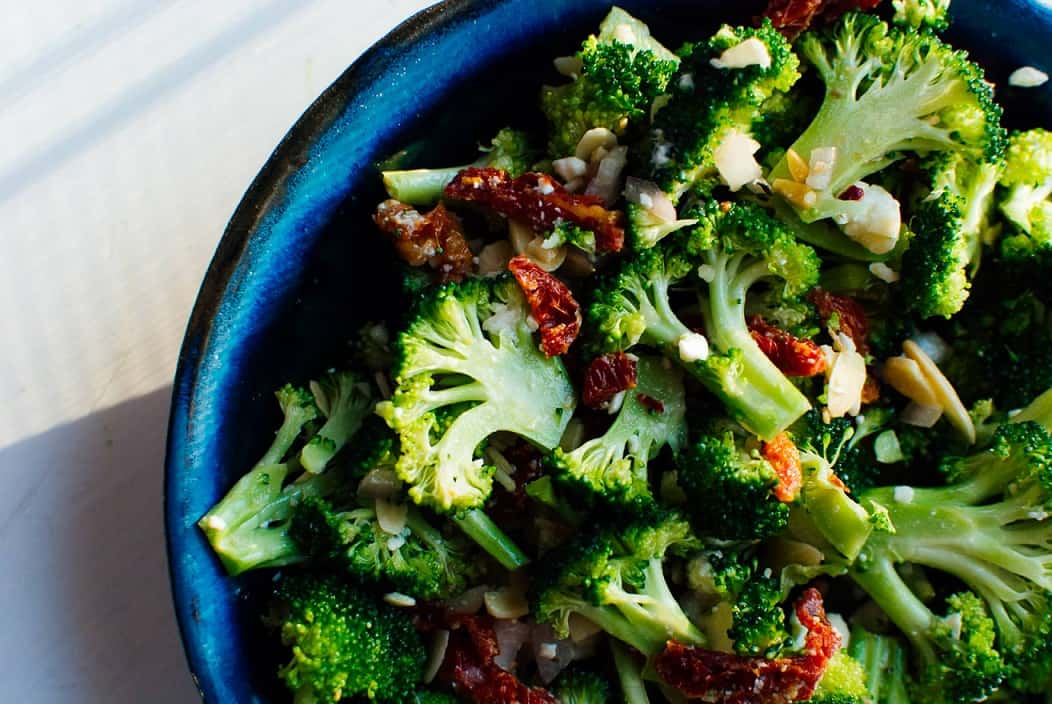
Broccoli
When your parents told you to eat your broccoli, they were right! Broccoli is a brassica, much like cabbage. It’s one of the best green vegetables to be included in your diet. One broccoli stalk contains 4.3 grams of protein and 51 calories. Broccoli is rich in phytochemicals, making it an anti-cancer food. Broccoli also includes tons of other amazing nutrients, such as vitamin C and fiber. Furthermore, broccoli is an outstanding side to add to every meal.
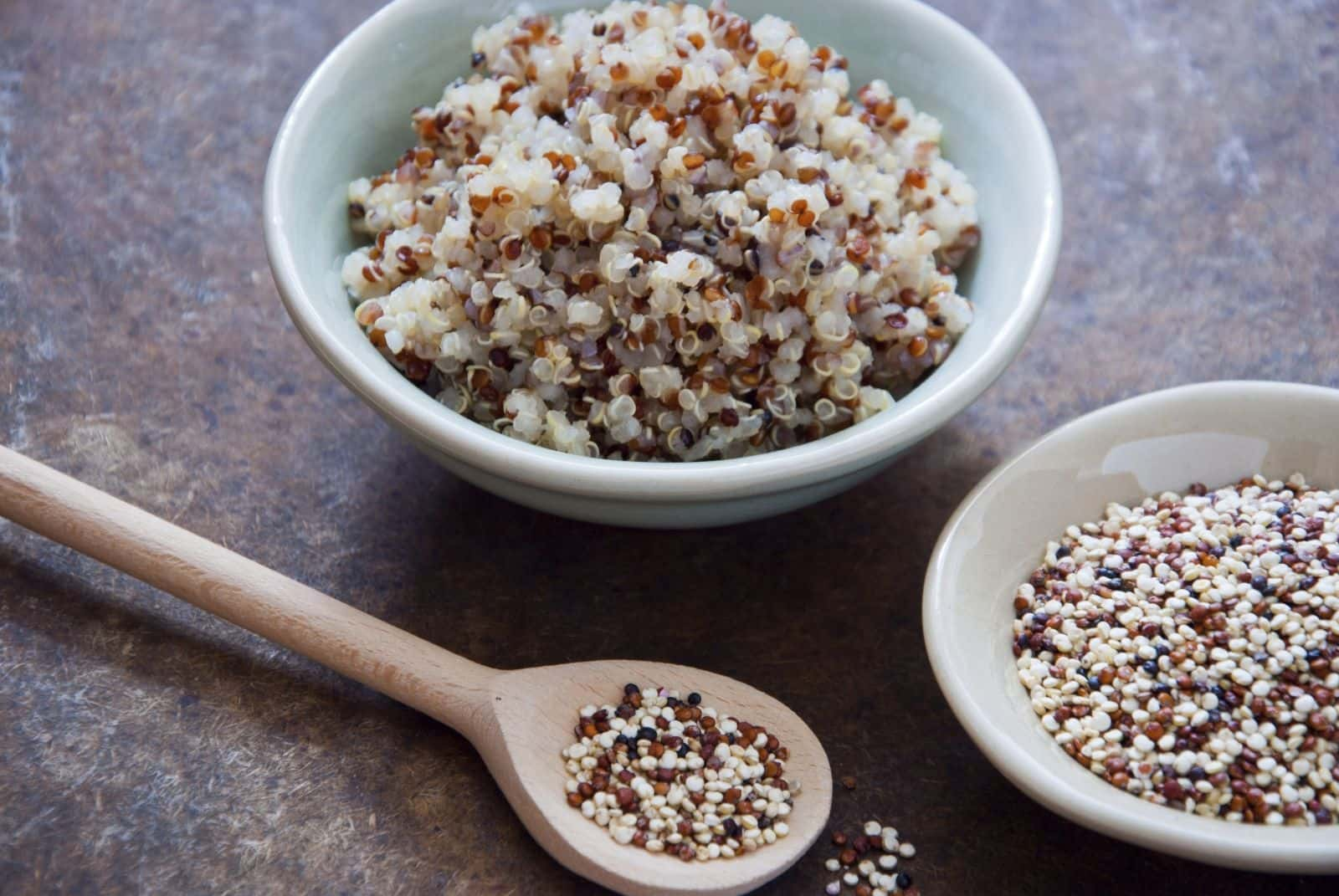
Quinoa
Quinoa is one of the best superfoods in the world and has about 8 grams of protein per cup in it. This is filled with 27 grams of fiber per cup, too. It contains all the amino acids, which the body can not produce, so for vegetarians and vegans; it is an excellent choice. Quinoa looks a little like couscous and is versatile, as well as it may also be paired with stir-fries, beans, chili, or curries. You may even use quinoa as a substitute for rice.
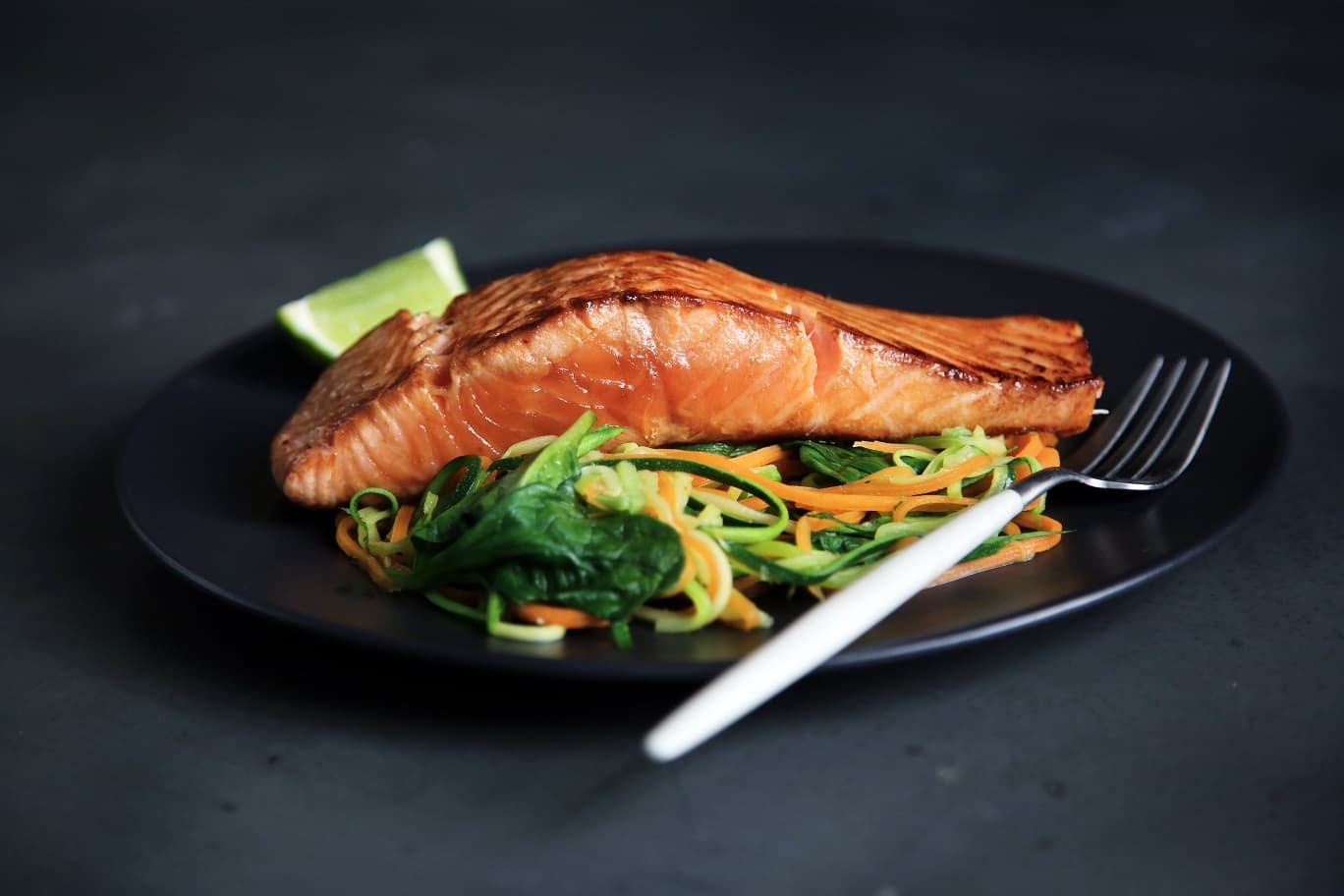
Grilled Salmon
Salmon has a lot of nutritional benefits and is delicious! Salmon is filled with protein, making it a slow-digesting food, leaving you feeling full. It’s filled with vitamins and minerals to set off your metabolism. There are several ways to cook salmon, but we prefer grilling it to maintain the most nutritional benefits to your wellbeing. While it may be more costly than other protein sources, salmon can substitute meats that contain unhealthy fats that are bad for your heart.
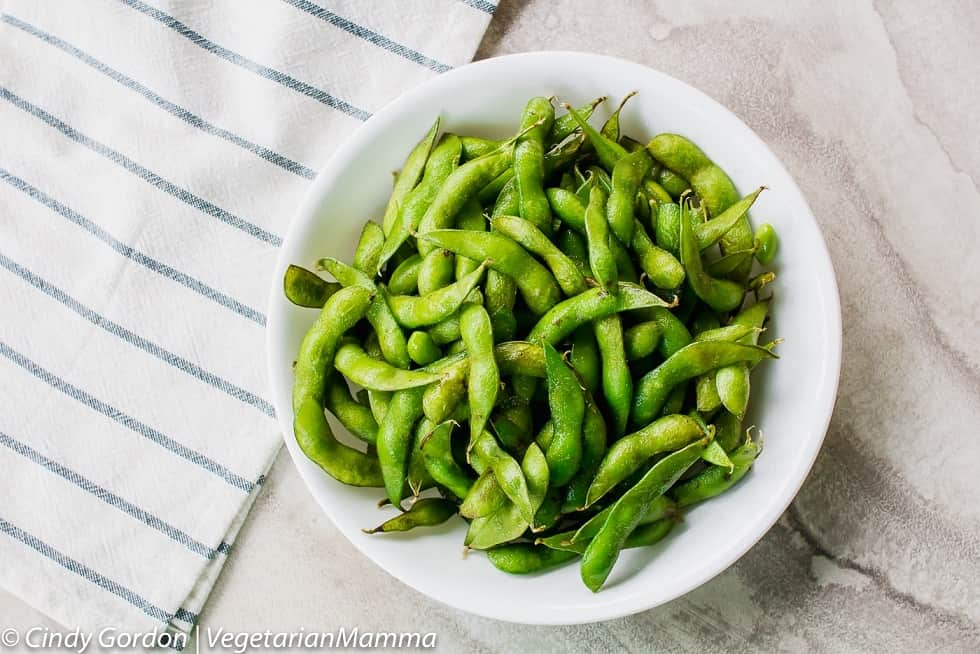
Edamame
If you’re serious about building muscle, this should be in your veggie rotation. This Japanese appetizer is a perfect way to enjoy some protein snacks. Edamame contains about 18 grams of protein per cup. Also, it has a lot of minerals and vitamins. If on a cheat day you’re looking for a fun treat, try dunking these delicious bean pods into soy sauce, or just add them to a Japanese dish.
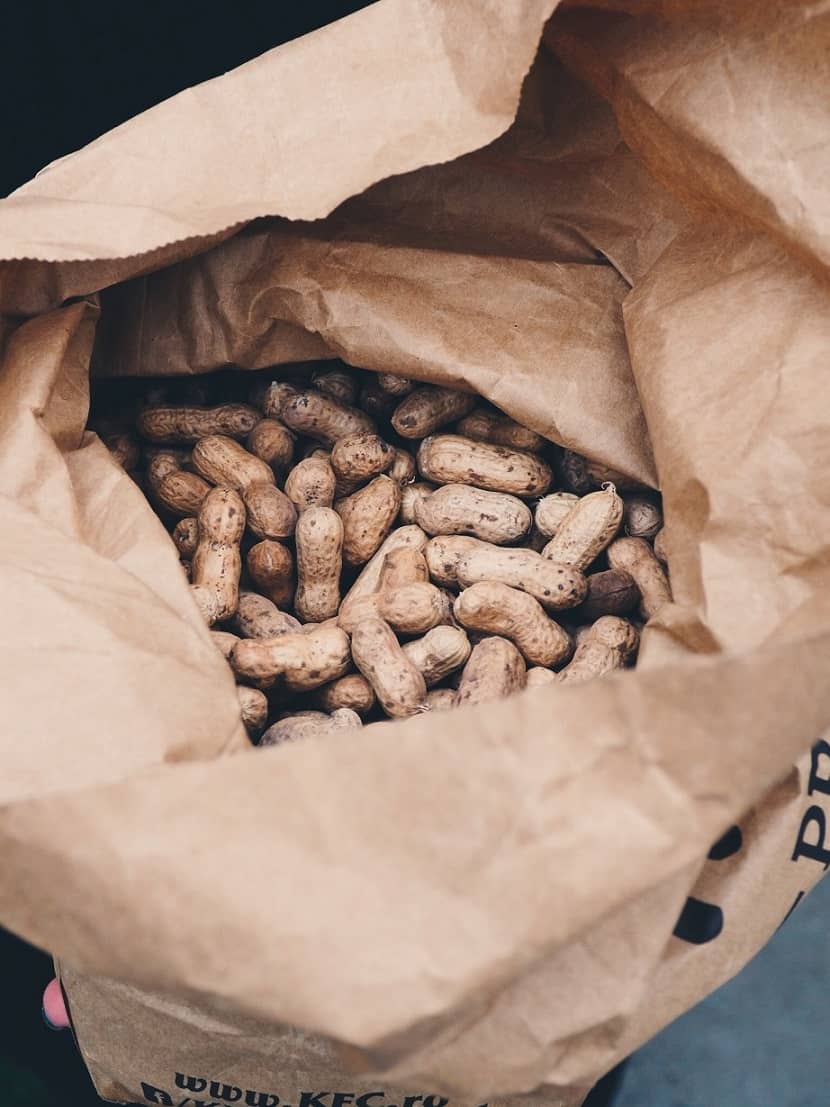
Peanuts
A healthy and easy way to increase your intake of proteins is to eat peanuts. Peanuts contain a lot of healthy fats, so they are not just protein. Both of these things make sure to keep your body balanced all day long. This can slow down hunger quickly too.
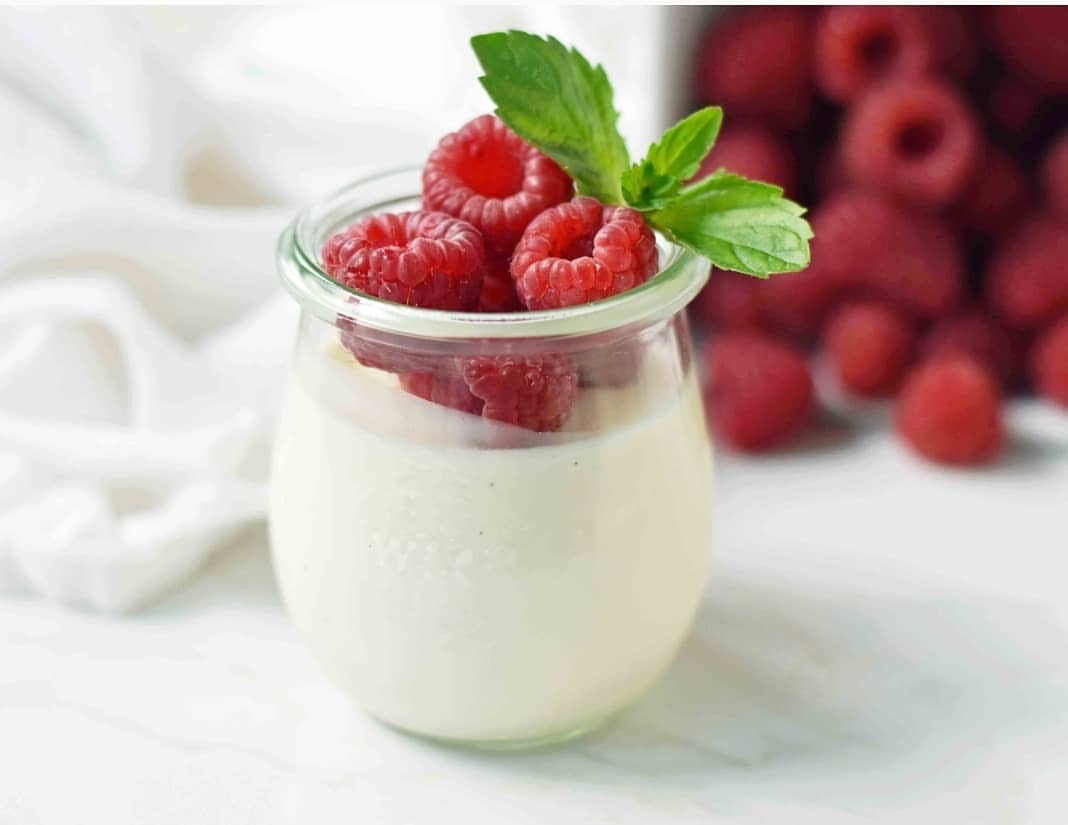
Greek Yogurt
Greek yogurt is a protein-filled food that can be combined or blended with a variety of other foods. Greek Yogurt has up to 20 grams of protein per serving. Greek yogurt is made by straining out the whey in regular yogurt. It makes it richer and creamier. Also, it contains healthy fats to help keep you full together with the protein: not to mention it is a perfect source of calcium. With Greek yogurt, you might feel fuller because of the mix of protein and texture. But that’s great if you’re struggling to control portion sizes.
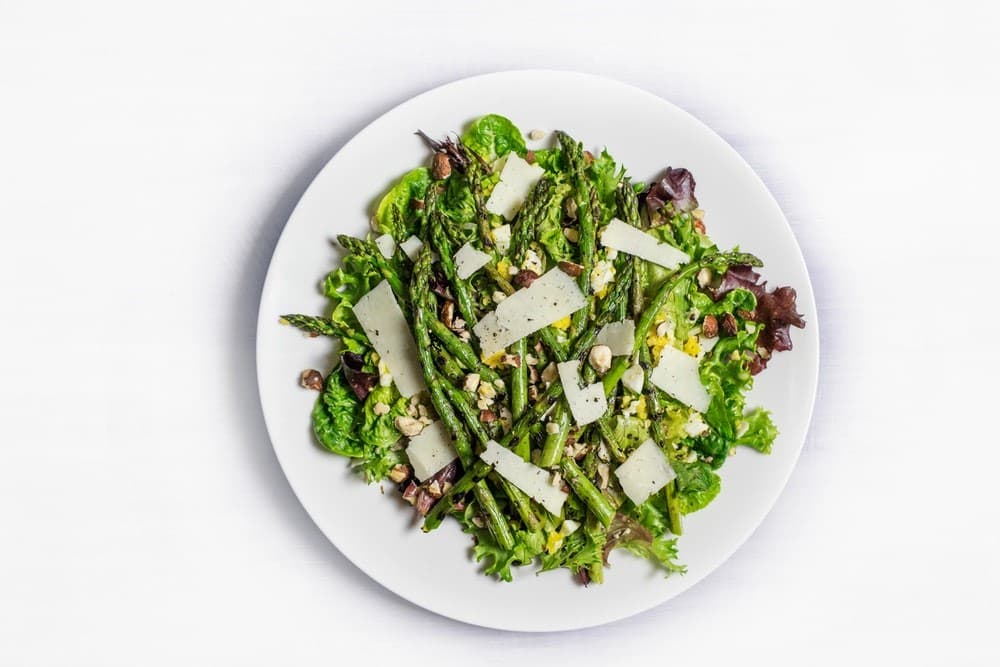
Asparagus
Asparagus is a perfect choice for any meat dish. Asparagus has a distinct taste and is excellent for steaming, boiling, grilling or pan-frying—Cook or grill with a little olive oil for maximum flavor. There is nothing like asparagus on the grill that says summer-time fitness. In general, a cup of asparagus contains 3 grams of protein. It also contains other nutrients such as vitamin B6, A and K, folate, phosphorus, magnesium, manganese, and copper.
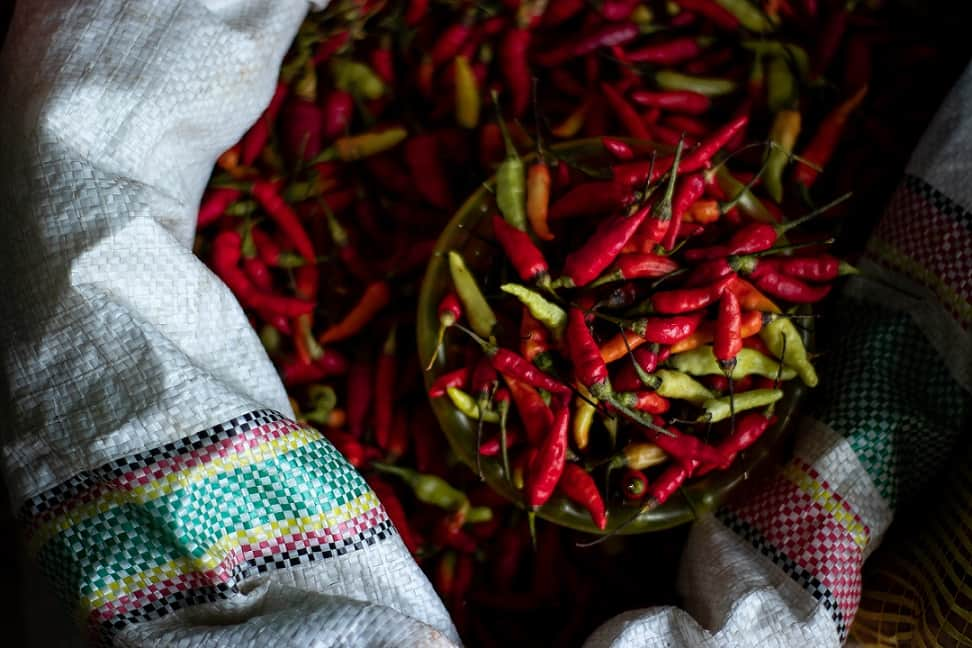
Chili Pepper
Even though spicy foods seem to contain more fiber than protein, these chili peppers are a fun source of protein if you like heat. One chili pepper can provide up to 2 grams of protein. Of course, you can also try other spicy foods to help suppress your huge appetite, but chilis is a very healthy spicy choice that offers a decent amount of protein to add to your meal or hot snack. Brightly colored foods also help to keep you full so that you don’t over-eat.
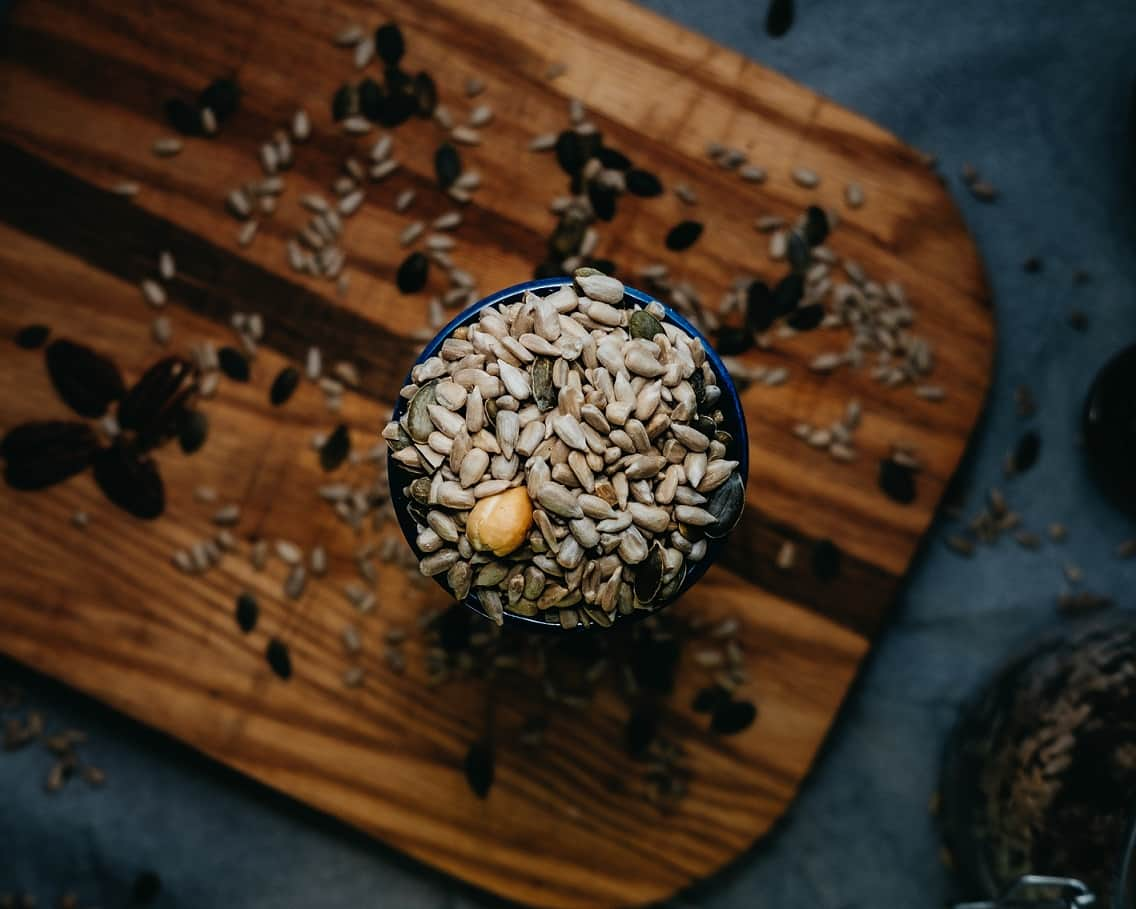
Pumpkin Seeds
Who doesn’t like toasted pumpkin seeds on a day of rest while snuggling up with a movie? Pumpkin seeds as it turns out are a great source of protein. One cup of pumpkin seeds has 12 grams of protein in it. Pumpkin seeds can be consumed as a snack, added in Greek yogurt, or used in salads, cereals, or soups. Scoop up your health benefits as you carve your pumpkins!
Whey Protein
Growing the consumption of protein tends to boost your health as protein suppresses hunger and keeps you full. While you don’t have to go to the gym to get all the benefits of whey, a fast fat burner is known as mixing whey protein drinks with a little weight lifting. In a range of foods and soft meals, whey protein can be mixed in all that.

Artichokes
Artichokes usually are easy to find in most grocery stores. One artichoke contains 4 grams of protein. Artichokes are suitable for the digestive system. They have insoluble fiber that absorbs water and lets the digestive tract move things around quickly. Present in a dip, warm dish, or prepare separately.
9+ Popular Life Hacks That Don’t Actually Work
Here are our 9+ favorite supposed life hacks that just don’t quite work.
The internet can be a fantastic wealth of information. Of course, this is provided you are getting trustworthy and reliable information.
Some of the most popular bits of info floating around the web include so-called “life hacks”. They’re so popular that there are dedicated sites revolving around lifehacks, their mission? Simplifying the lives of its readers.
However, lifehacks often seem too good to be true. Yes, they get everyone’s attention, but often, they don’t actually work.
What are life hacks?
According to the Merriam Webster Dictionary (we were surprised it is now officially part of the English lexicon too), a life hack is defined as “a usually simple and clever tip or technique for accomplishing some familiar task more easily and efficiently.”
Got it? Good, let’s find some that don’t actually fit this definition as they are complete myths.
What are some popular life hacks that don’t actually work?
And so, without further ado here are some of our favorite popular fake life hacks from the internet. Sadly, this list is far from exhaustive and is in no particular order.
1. Toilet paper roll speakers are rubbish actually

The Hack: If you tape together a few toilet paper tubes, you can put your phone inside it for a cheap speaker system.
The Fail: If anything, the cardboard muffles the sound. Need a cheap way to redirect sound waves? Put your phone in a glass bowl. The waves will be forced upward rather than lost and dampened by cardboard and tape.
2. Longer-lasting batteries via refrigeration

The Hack: Want longer-lasting batteries? Simply toss them in the freezer or a fridge for a few hours. The cold will extend the batteries’ lifetimes, and you’ll ultimately save money.
The Fail: This supposed lifehack was so popular that Energizer had to make a statement against it. “Cold temperature storage can in fact harm batteries if condensation results in corroded contacts or label or seal damage due to extreme temperature storage,” the company noted. The shelf life is best at room temperature and with minimal humidity.
3. Tennis balls can be used to open locked doors, apparently

The Hack: Lock your keys in your car? Push a tennis ball against the lock. This forces air into the lock and moves the pins to unlock your car.
The Fail: You know a hack is a fail if Mythbusters can’t prove it’s valid. The hack went viral after a stunt on YouTube, and for the last decade, people have earnestly believed it. However, no amount of force will actually trigger the lock — even if you use a tennis ball with a smaller hole for greater air pressure.
4. Charge your phone with Gatorade and an onion

The Hack: Phones dying in public places might be one of the most annoying modern inconveniences. If you find yourself away from the reach of a charging cable, simply take an onion. Soak that onion in some Gatorade and voila — your phone will charge once you plug it into the onion.
The Fail: This hack seems plausible, especially if you’ve grown up going to science fairs where students have done that timeless potato alarm clock project. However, those projects normally include zinc galvanized nails and a clean, copper penny.
Those two metals get stuck into the potato and can conduct a flow of electrons. The popular onion hack lacks those two different metals to create a galvanic cell. If you really needed this hack to work, we guess you could strip the USB connector to connect the copper and zinc?
We certainly don’t recommend it.
5. Use hand sanitizer to remove permanent marker from clothes

Getting a permanent marker on a favorite shirt is worrisome. But how can you get it off?
The Hack: Save the wash and rub some hand sanitizer on it. The alcohol in the sanitizer will pull the stain right out.
The Fail: No, don’t bother. Keep the sanitizer. It will cause the ink to bleed further into the fabric without actually removing it and the friction from rubbing on the stain will just spread it further.
6. Refrigerating extra beers with an air conditioning unit

The Hack: If you don’t have enough room in your fridge for beers, you can “cold brew on a budget.” Simply use hangers or tape to hold your beer next to an air conditioning unit.
The Fail: This is an excellent way to drop more beers than you cool. Would you really want to risk losing a beer when you can just stick the bottle in the freezer for a few minutes and get the same effect?
7. DIY plastic cup laptop speakers

The Hack: By placing two halves of a plastic cup on your laptop speakers, you can amplify the sound. It’s perfect for parties or movie nights.
The Fail: This one is similar to the toilet paper roll hack in that it’s equally ineffective. Granted, plastic doesn’t absorb sound like cardboard. However, all this hack does is bounce the sound waves back to the keyboard rather than to the user.
8. A hammer and nails can open a bottle of wine

The Hack: This hack went viral among wine aficionados. If you can’t find your corkscrew (or if you’re celebrating the grand opening of a hardware store), you can open a bottle of wine with a nail and a hammer.
The Fail: The nails slip out pretty easily. While successful variations of this hack swear it’s about the angle of insertion, most people report a low success rate. Just buy a cheap corkscrew or forget about the bottle and get boxed wine.
9. Untangle your headphones by shaking them

The Hack: Tired of your headphones knotting together in a purse or a bag? All you have to do is press down on the area where the earbuds connect and shake. In a few seconds, you’ll have them untangled without the frustrations of actually detangling them.
The Fail: This might be an excellent way to take out your frustrations, but you’ll look like an idiot doing this in public. Not to mention you’ll probably whip yourself or others with the headphone cords.
10. Uncork wine with a wire clothes hanger

The Hack: Wine aficionados will be appalled by this suggestion, as they always know where their corkscrew is. However, not everyone is dedicated. This lifehack suggests using the bent end of a clothes hanger to pop out the cork.
The Fail: The hangers lack both the strength and the shape of a corkscrew. At best, you’ll just pull the hanger straight out. At worst, you’ll throw the wine bottle across the kitchen table as a reflex and cause it to shatter.
Oh, and you’ll be one wire hanger short.
And that’s a wrap folks.
The best sustainability tips and life hacks according to TikTok
We learn something new every day… or with every TikTok video.
Great minds think alike, but social media users with sustainability on their minds have a few tips, tricks and life hack up their sleeves.
Just one quick scroll (which is actually two hours minimum) through the #Sustainability and #Ecofriendly trending hashtags on TikTok quickly turns into a cheat sheet for making everyday sustainability easier. Here are the best sustainability tips and tricks according to TikTok.
Don’t let your veggies go to waste!
This is how to make greens, carrots and potatoes last much longer: store greens with a napkin to absorb moisture, keep carrots in a jar of water and tuck potatoes into a cool dry place far away from onions.
What about veggie scraps? Turn them into a delicious veggie broth.
Apparently veggie scraps can also turn into an entire new vegetable, specifically store-bought lettuce which can continue to grow at home, even after eating it.
Household swaps and hacks
A simple toothpaste swap for zero-waste chewable toothpaste tabs can reduce waste by a lot.
Another life hack: get a soap rack to make your soap bar last longer.
Technically, cold water is just as good for doing laundry as hot water, and uses less energy.
Speaking of cold water, don’t let the tap run while waiting for the water to warm up. Collect the water and use it for other things like watering plants.
TikTok is full of great surprises, like natural loofah plants that work great for exfoliating or cleaning and are compostable!
A few other excellent alternatives are to use dryer balls instead of fabric softener, beeswax food wrap in lieu of plastic wrap, glass and metal straws, rags instead of paper towels, and dish-washing block instead of liquid dish soap/detergent.
TikTok users are also discovering that chia shaker tops fit perfectly onto mason jars, which makes bulk shopping and drinking iced coffees much easier.
Upcycle
Make your own terracotta pots out of glass vases with only baking powder and a cup of paint, rather than spending tons on expensive terracotta pots.
Mend clothes like jeans and jackets without any sewing with a simple iron-on patch.
Categories
- Breaking News 148
- buisness 21
- Entertainment 108
- Box Office 13
- Gaming 10
- Marvel MCU 8
- Movies 24
- DC DCU 3
- Netflix Series 2
- Series 6
- Enviornment 8
- Fashion 96
- Food 13
- Health & Fitness 9
- History 1
- Hollywood Gossip 3
- Home & Garden 3
- International News 116
- Lifehacks 21
- Literature 30
- Local News 75
- Modeling 1
- Music 8
- Politics 10
- Science 37
- Social 3
- Sports 106
- Technology 31
- Traveling 70
- Uncategorized 64
- Vehicles 136
Ask Your Problems
-
About Leasing
7 years ago
-
About Vehicles
7 years ago













Most commented